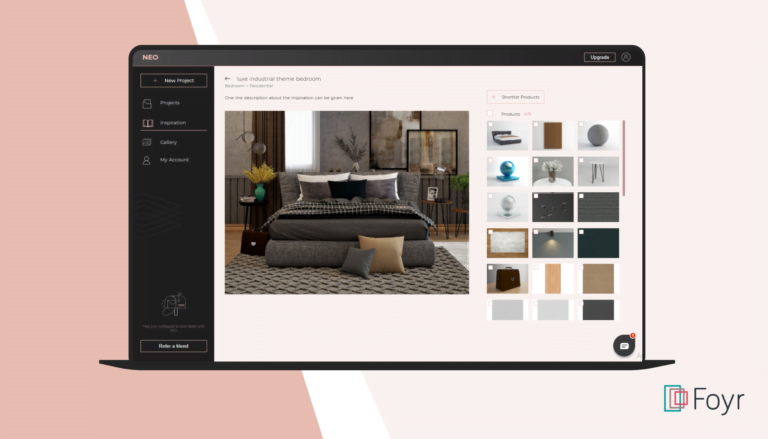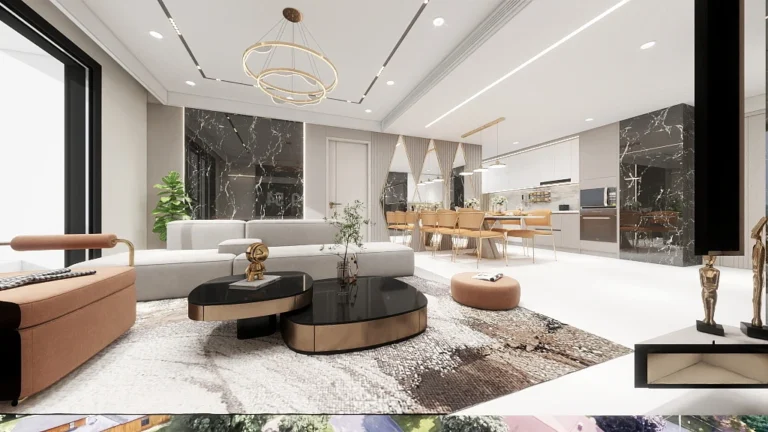There’s no better way to describe a kitchen than as the soul of the home. While four walls may build a house, it’s the kitchen that brings it to life and truly makes it a home. For many homeowners, the kitchen is the space they invest the most time and thought into—striking the perfect balance between function and style.
As the heart of daily life, a kitchen must not only be beautiful but also exceptionally practical. From layout to lighting, every detail matters.
The possibilities for creating your ideal kitchen are endless—limited only by your imagination. To help you along the way, we’ve gathered expert tips from interior designers that will inspire you to reimagine your space. These innovative ideas will guide you in designing a kitchen that’s not only functional and stylish but also a joy to use every day.
Outlining the Kitchen Layout
A well-designed kitchen starts with a thoughtfully planned layout that integrates all essential elements—appliances, plumbing, fixtures, and storage. But beyond functionality, your kitchen layout should reflect how you envision using the space on a daily basis.
Do you want a dining nook within or adjacent to the kitchen? Would a central island serve as a prep station or breakfast counter? Perhaps you’d like to incorporate a stylish mini-bar in one corner? These decisions are key to determining the best layout for your lifestyle.
Once you identify your needs and usage patterns, finalizing the layout becomes much easier. Expert interior designers in Kerala recommend a range of efficient kitchen layouts, including:
- U-shaped kitchens – Ideal for maximizing storage and counter space.
- G-shaped kitchens – A great option for open layouts with more surface area.
- Peninsula layouts – Perfect for combining a working kitchen with social spaces.
- L-shaped kitchens – Compact and versatile, suitable for both small and large homes.
Evaluate how each layout supports your daily cooking routines and overall space flow. And don’t forget—keep a close eye on your budget and compare it with the actual cost of building to ensure a smooth execution.
Storage Space is Key
In any kitchen—big or small—every inch of space matters. Efficient organization is essential to ensure smooth cooking and easy access to daily essentials. Even in a spacious kitchen, poor storage planning can lead to frustration and unnecessary movement during meal prep.
Leading interior designers in Kerala often recommend modular kitchen designs with clearly defined zones for specific kitchen functions. Grouping items like utensils, cookware, spices, and groceries by usage improves accessibility and keeps the kitchen clutter-free.
To maximize storage:
- Use cabinets with pull-out shelves and deep drawers to avoid rummaging through clutter.
- Add spice racks, cutlery trays, and kickboard drawers to use every bit of available space.
- Extend overhead cabinets to the ceiling to eliminate wasted vertical space and reduce dust buildup.
- Consider built-in storage solutions like bench seating with drawers if you have a kitchen island or dining nook.
With smart storage planning, your kitchen can be both highly functional and visually streamlined—making cooking a more enjoyable experience.
Lighting Options
Lighting is often one of the most overlooked aspects of kitchen design. While it plays a starring role in living rooms and bedrooms, many homeowners underestimate its importance in the kitchen. However, with the growing popularity of modular kitchen designs, lighting has rightfully returned to the spotlight.
Beyond natural light, a well-lit kitchen requires a thoughtful mix of functional and aesthetic lighting. The golden rule: no surface should be left in the shadows.
Here’s how you can layer your kitchen lighting for both style and utility:
- General Lighting: Provides uniform illumination across the kitchen. Common choices include recessed ceiling lights, flush mounts, or wall-mounted fixtures that evenly brighten up the space.
- Task Lighting: Focuses light on high-use areas such as countertops, the stove, and the sink. Under-cabinet lighting, pendant lights over islands, or directional spotlights are perfect for these zones.
- Accent Lighting (Optional but Impactful): Adds a decorative touch and highlights design elements like open shelves, glass cabinets, or backsplash textures. LED strip lights and toe-kick lighting can subtly enhance the kitchen’s ambiance.
Integrating these layers not only improves visibility and safety but also elevates the overall mood of your kitchen. Work with your interior designer to ensure lighting complements your kitchen’s layout, materials, and color palette.
Kitchen Style
The style of your kitchen is more than just aesthetics—it’s a reflection of your personality and your home’s character. A well-designed kitchen can seamlessly blend with the overall architecture of your home while also standing out as a signature space.
To begin, consider the materials, finishes, and color palette that resonate with your taste. In modular kitchen design, using one or two dominant colors across surfaces is a popular choice for achieving a clean and cohesive look. However, don’t be afraid to mix elements—modern kitchens today often feature blended styles that combine traditional charm with contemporary functionality.
While design freedom is important, always prioritize quality and durability—especially in high-use areas like countertops, cabinet shutters, and flooring. A kitchen is a long-term investment, and using robust materials will ensure it stands up to everyday wear and tear.
Most importantly, your kitchen style should reflect how you live. Whether you prefer a sleek, minimalist space or a warm, rustic aesthetic, the key is to balance beauty with practicality.
If you’re unsure how to bring your vision to life, consult with a professional interior design company. Experts can help translate your ideas into a kitchen that’s uniquely yours—stylish, functional, and built to last.




